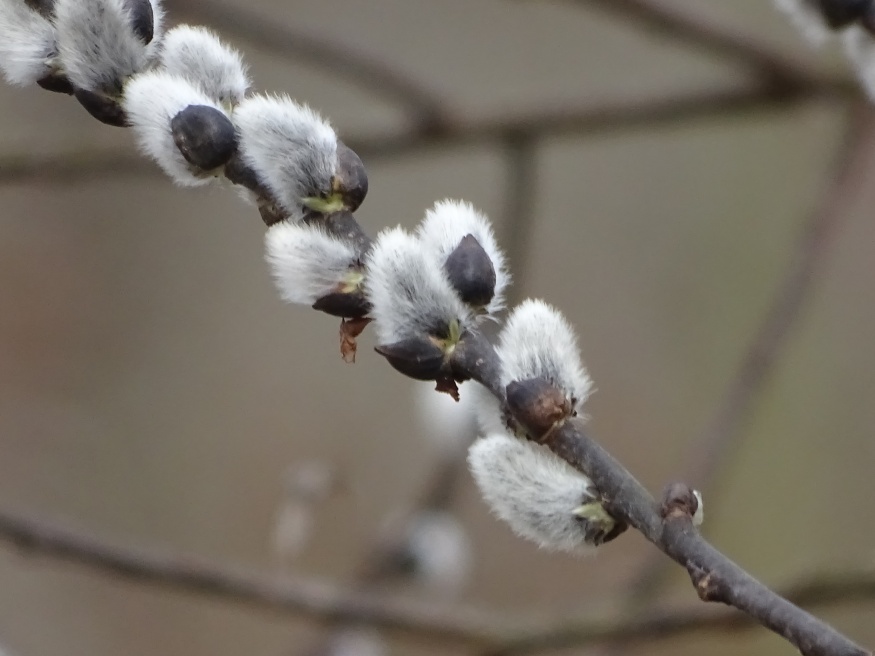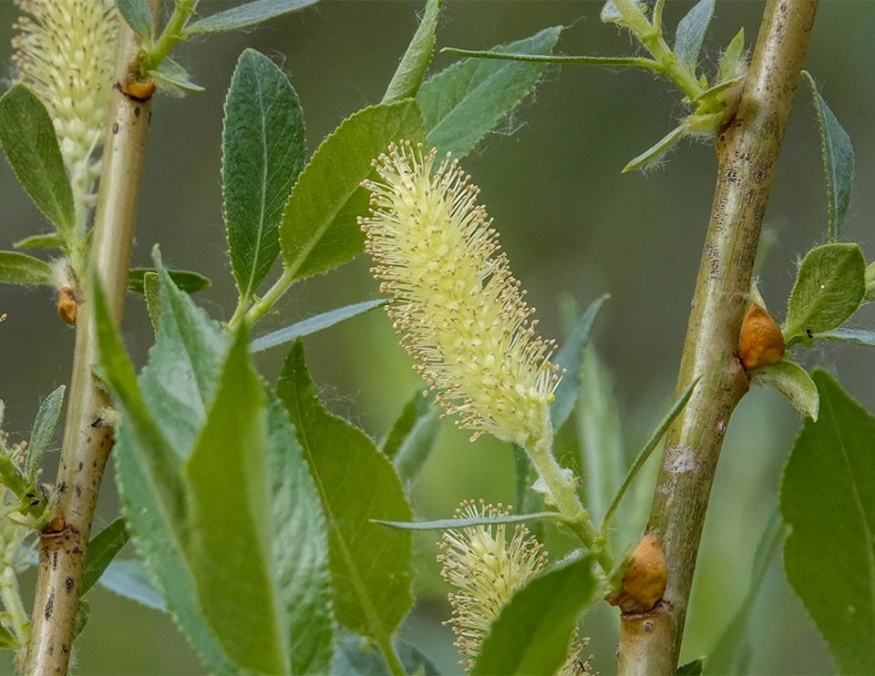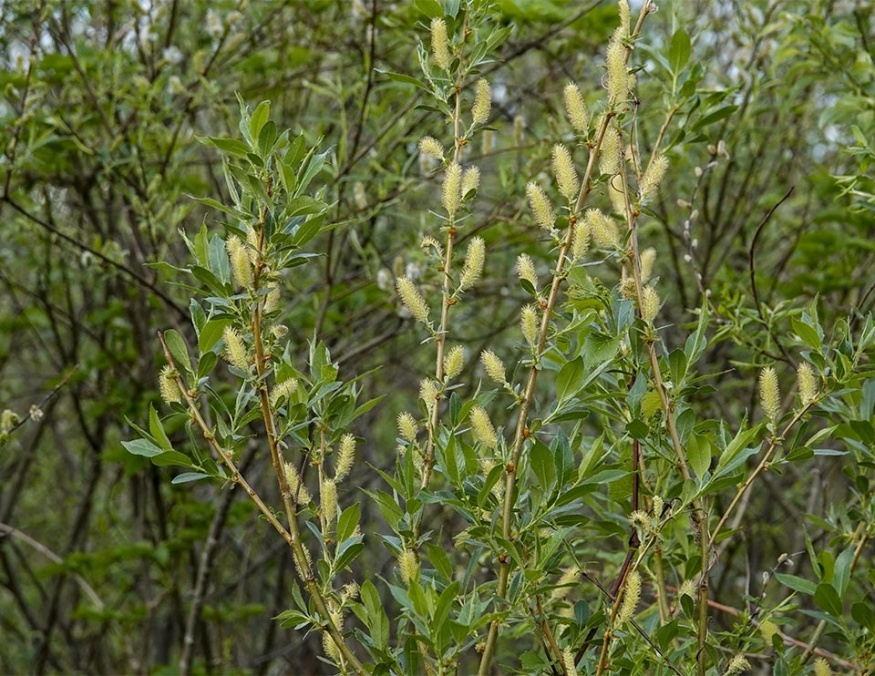About
The pussy willow is a shrub to small tree in Southern Canada and north central to Eastern United States; occasionally a small tree up to 30ft but usually it is a multi-stemmed shrub. Pussy willow is normally found in wet conditions where it can become vigorous and suckering but can also be found on some dryer sites.
Male plants can be especially good as a specimen, hedge or in a rain garden for winter interest; though shallow roots can invade spaces and make gardening difficult. In late winter to early spring, silk textured, gray furry tufts emerge from buds (which come before the leaves). The tufts are actually flower catkins and the males ones are larger and more attractive than those of the the females. They are a considered a sign of spring as they are the first willow catkins to appear. Twigs can be cut and put in water indoors to induce flowering then dried. To preserve the shrub shape, stems should be cut back every 3-5 years.
Male stamens are golden and female pistils greenish. The Leaves are dull, medium green, and glaucous underneath; bark is dark gray and scaly. Ecological benefits include food for wild fowl, songbirds, and mammals. It also attracts butterflies, native bees, bumble bees, and honey bees.
References
Lady Bird Johnson Wildflower Center. (2012). Salix discolor. Retrieved from https://www.wildflower.org/plants/result.php?id_plant=sadi
Missouri Botanical Garden. (n.d.). Salix discolor. Retrieved from http://www.missouribotanicalgarden.org/PlantFinder/PlantFinderDetails.aspx?taxonid=286783
NC State Extension. (n.d.). Salix discolor. Retrieved from https://plants.ces.ncsu.edu/plants/salix-discolor/
United States Department of Agriculture. (n.d.). Salix discolor. Retrieved from https://www.fs.fed.us/database/feis/plants/shrub/saldis/all.html
Shipping
We currently ship seeds to all Canadian provinces and ship plants just within the provinces of British Columbia and Alberta. Seeds ship year-round and usually take a few days (or longer if you are ordering from a distant province). It usually takes 2-5 business days in the mail for plant orders once shipped. Plants are generally available from May to September and can be reserved during off season; Shipping costs are calculated during checkout. Seed orders over $100 ship free! See Shipping for more details.


